How to grow peppers in pots – a simple beginner's guide to growing your own
Learn how to grow peppers in pots on a windowsill, patio or in a greenhouse for a delicious homegrown crop
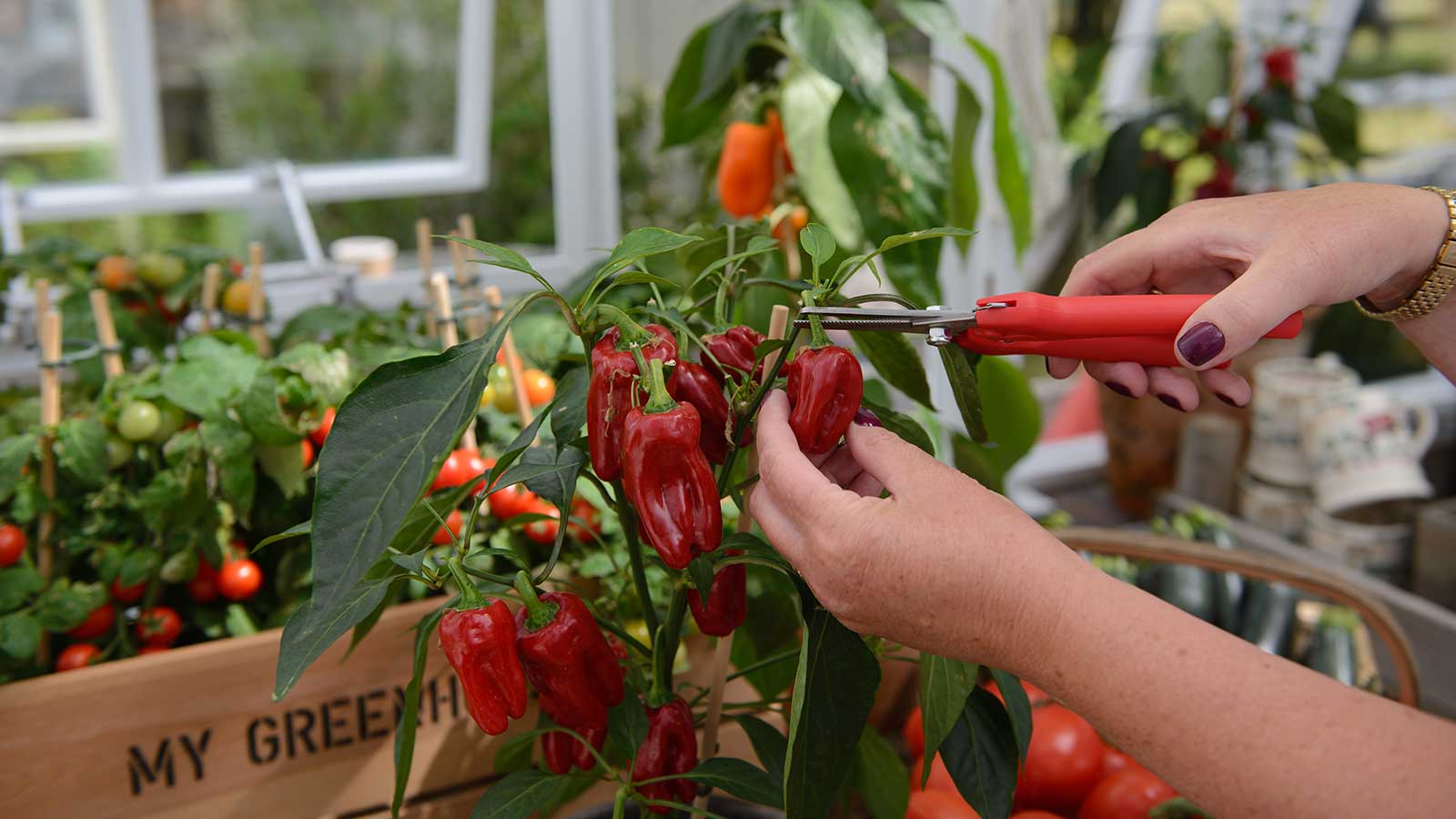

Even a newcomer to vegetable growing can quickly master how to grow peppers in pots and enjoy a delicious harvest of this healthy and versatile veg.
Homegrown crops can be added to your garden ideas whatever the size of your outdoor space – even the smallest corner of a patio, courtyard or balcony can be carved out for growing vegetables in pots. Peppers are also happy growing indoors on a sunny windowsill or in a conservatory or greenhouse.
Peppers are among the most popular veg for use in a multitude of dishes or added raw to salads, and with supermarkets experiencing shortages, now is the time to try growing peppers in pots.
You'll be glad to know that, given the right conditions, they are also one of the easiest crops to grow and if you sow seeds now, you could be enjoying your first harvest within a few months.
How to grow peppers in pots
The most important aspect of growing peppers is providing the correct growing environment. This is why learning how to grow peppers in pots will offer the greatest chances of success because you can move the pots to the best location for the seeds to germinate and the plants to thrive.
Peppers need a warm environment with plenty of direct sunlight to grow, so are ideal for window box planting on a sunny, south-facing windowsill; add them to the list of crops to grow as a greenhouse idea, or nurture them in a sheltered spot in a courtyard garden or as a balcony garden idea.
'Most pepper varieties come from warmer climates and need plenty of heat to begin germinating. This makes them a perfect plant to grow in a pot indoors, where they are more sheltered from cold weather conditions,' explains Matt Jordan, gardening expert for The Greenhouse People.
Now is the time to start sowing pepper seeds. 'Peppers are an ideal vegetable for beginners in greenhouse growing to try. Sow in seed compost from mid-February to early April,' explains Tom Barry, CEO of Hartley Botanic. Sow your seeds at the same time as other easy-to-grow crops, such as if you're growing tomatoes in pots.
If you’re going to be growing peppers in pots outdoors, wait until later March or April, when the weather has warmed up a little, before sowing seeds.
What you will need
- Seed tray with cells or small pots
- Free-draining compost, such as seed compost
- Pepper seeds
- Propagator (optional) or plastic bag
- 9cm (0.5 litres) and 20-25cm (5-7 litres) pots for potting on
- Stakes for supporting as they grow
- Multi-purpose compost for potting on
- Watering can
- Fruit and vegetable fertiliser
How to grow peppers in pots step-by-step
1. Prepare the seed tray or pots
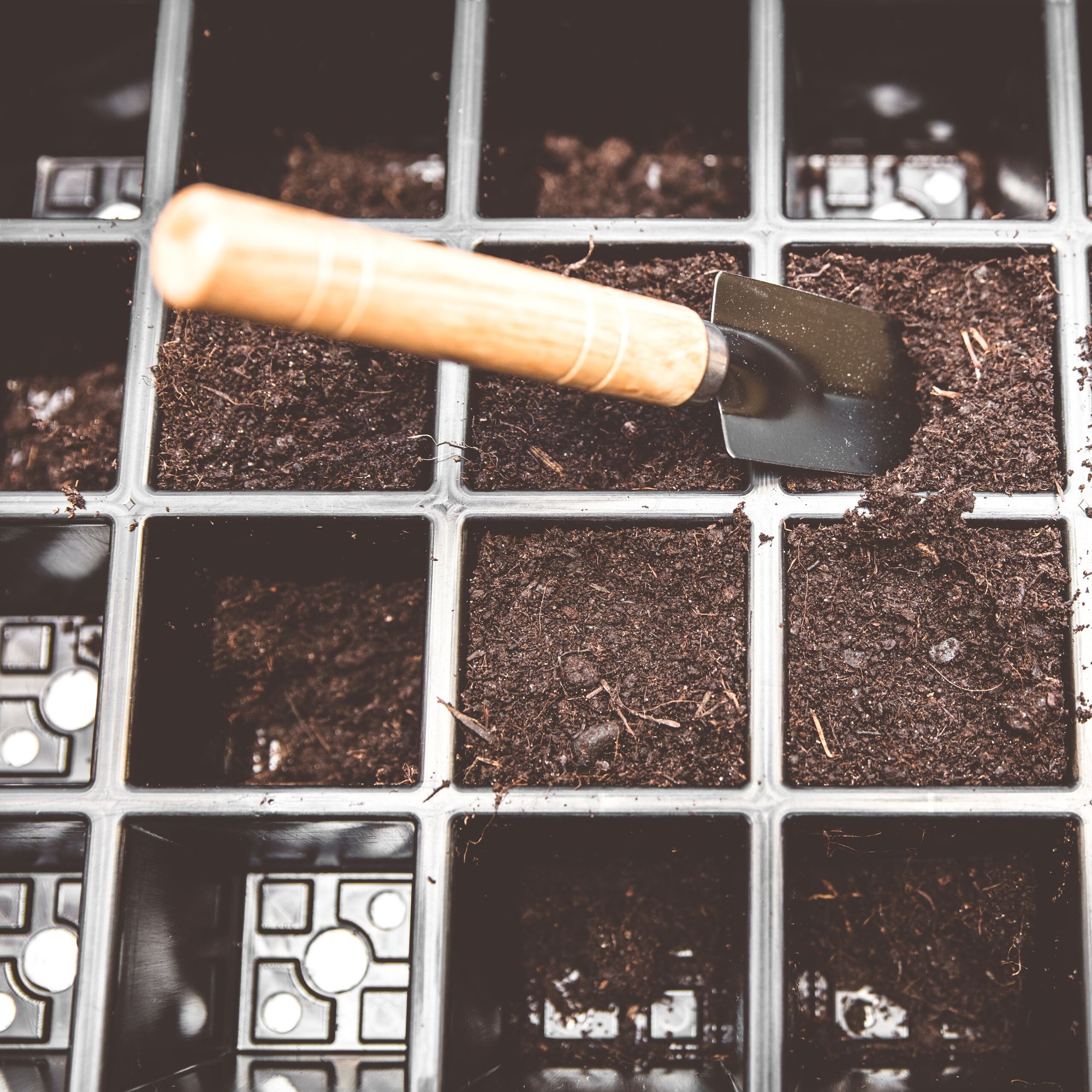
Fill a seed tray – with or without grids – or small individual pots with seed compost, and moisten – but not soak – the compost with a sprinkling of water from a watering can. Creating a warm and moist environment will help the seeds to germinate.
For an environmentally-friendly option, why not recycle old yoghurt pots for germinating pepper seeds? Make sure that you add drainage holes in the bottom of the pots.
2. Sow pepper seeds
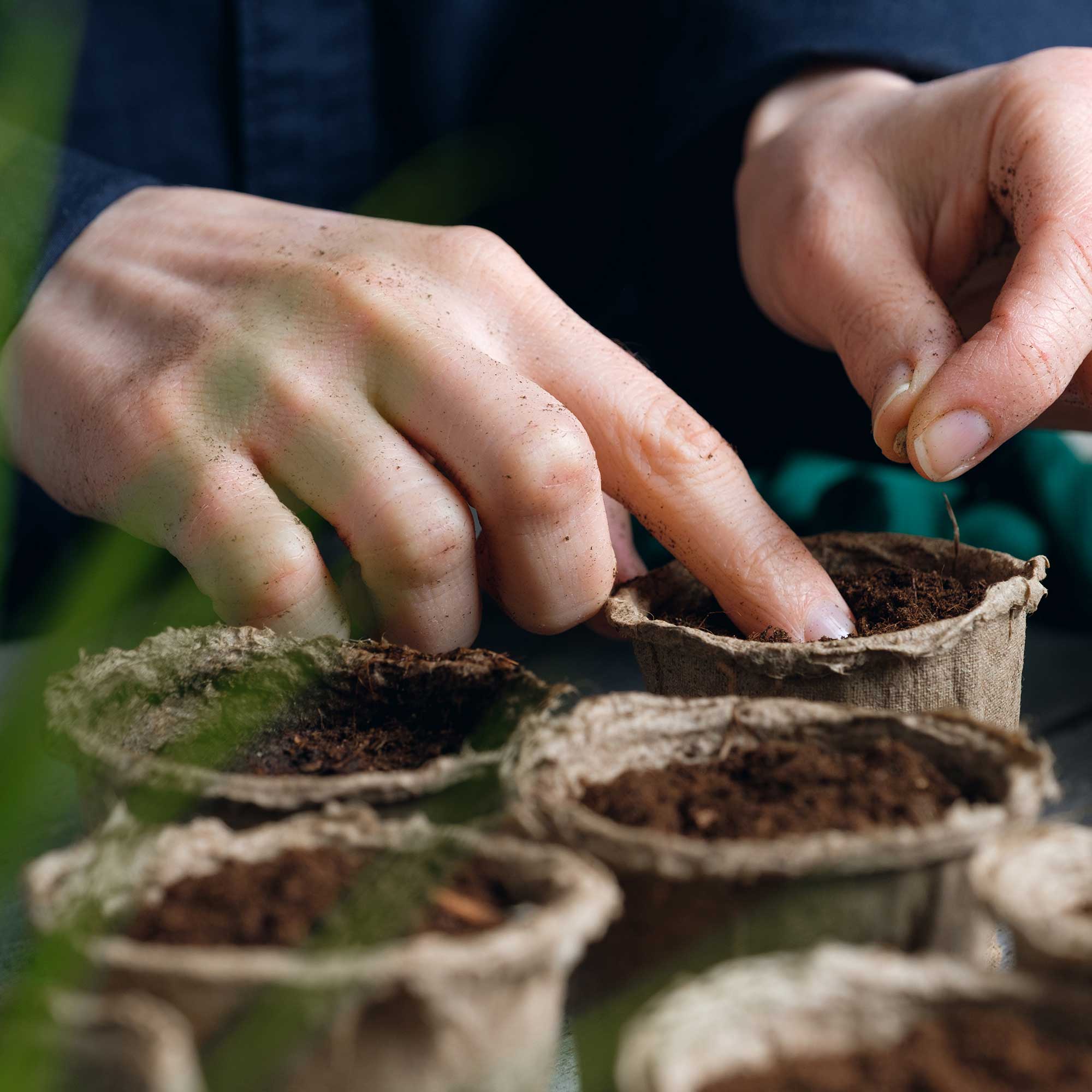
There is a wide range of seeds available for growing peppers in pots, including sweet or spicy options, so choose the best variety to suit your tastes.
'It's important to choose a variety that you know will fare well in a pot,' explains Andrew Mellowes of Burpee Europe, so look for those specified as suitable for container growing.
'Sweet pepper ‘Popti’ is a lovely compact plant that produces maximum yield in minimum space and ripens green to red. It will grow a bushy and full plant with high fruit production that will look attractive in your greenhouse or on your patio. Alternatively, sweet pepper ‘Lemon Dream’ is another compact pepper that will give you glossy, yellow peppers in a compact pot. If you fancy something spicier, you could try growing hot pepper ‘Reggae’, which has performed well in a pot when trialled,' Andrew adds.
Place the seeds evenly apart from each other – at least 2cm between each seed – on the surface of free-draining compost, and sprinkle with a dusting of compost on top.

Andrew Mellowes joined Burpee Europe as commercial director in January 2023, and has worked in the garden industry for many years, so knows a thing or two about growing vegetables.
3. Wait for pepper seeds to germinate
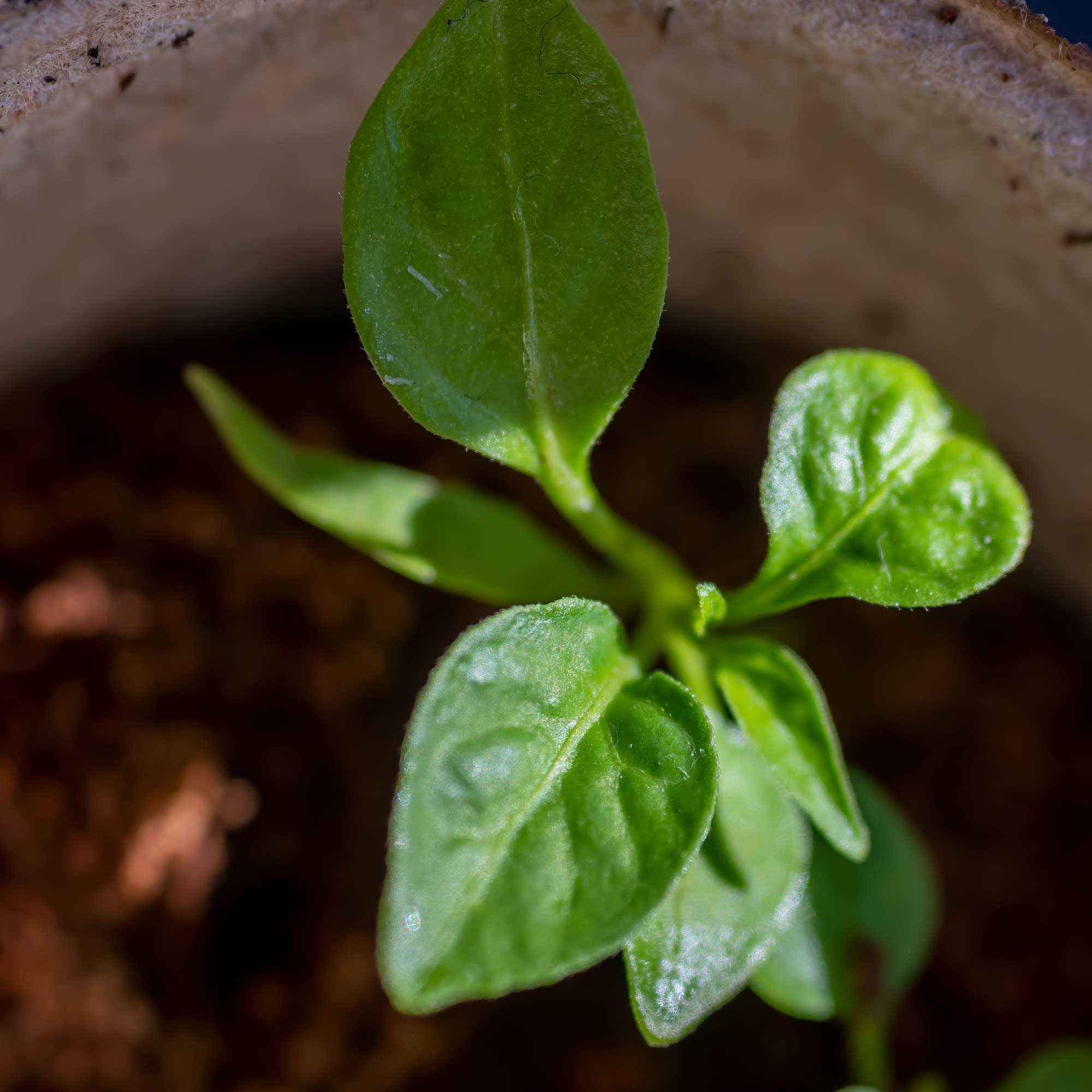
'Place your seeds at around 18-21°C,' advises Craig Wilson, a gardening expert from Gardeners Dream, who recommends pepper varieties Gypsy, Bell Boy, Amy and Redskin for growing in pots.
'For best results when growing peppers, start seeds in a greenhouse, propagator, or on a sunny windowsill. Keeping plants under glass or some kind of protection is important for successful growth in UK climates,' he adds.
'Cover the seeds with a plastic bag if they are on a windowsill – this will keep the conditions warm and moist. If your seeds are in a heated propagator this won’t be necessary,' says Andrew Mellowes.
4. Water regularly
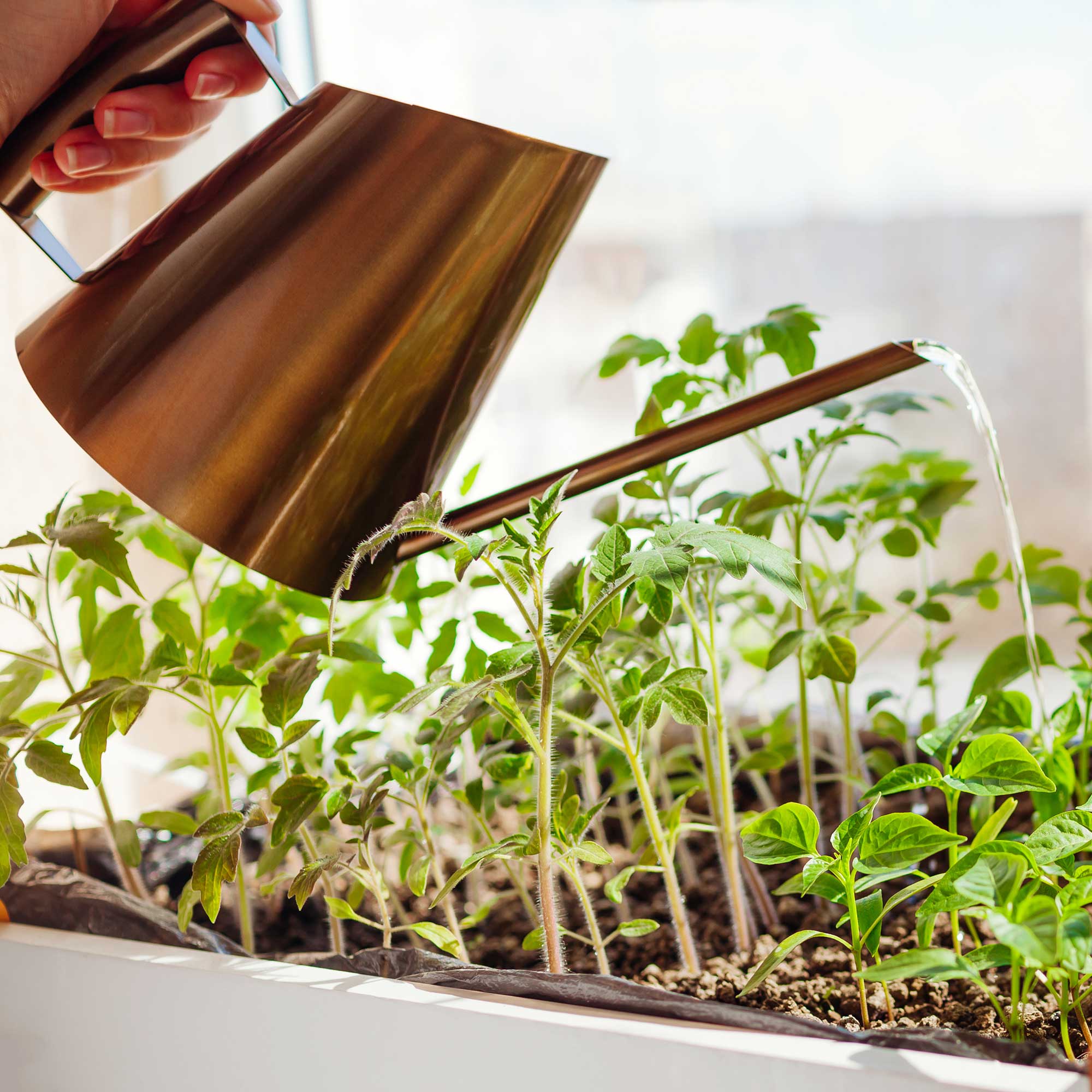
An important aspect of how to grow peppers in pots is ensuring they are well watered and the soil is kept moist – although not waterlogged.
'Peppers thrive in a moist environment, so it’s important to make sure you water your plants consistently,' says Matt Jordan.
'If the soil is dry to the touch then it should be watered, but avoid watering soil that is still damp. When growing peppers in pots indoors, a watering can will work perfectly, but be sure to water the soil rather than the leaves. Early morning watering works best, as this gives the plant time to absorb the water before it is evaporated,' he adds.
5. Transplant seedlings
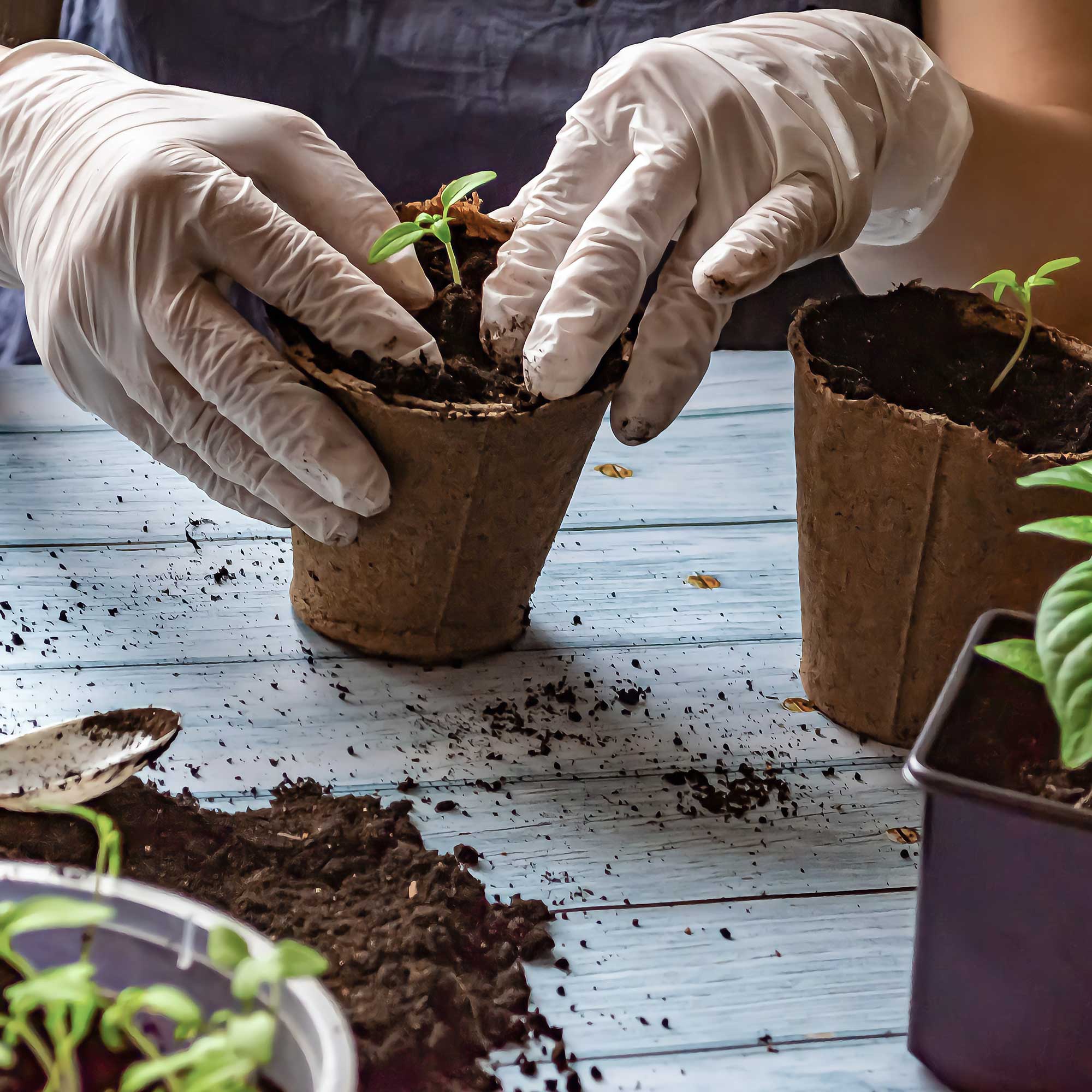
Seedlings will need to be transplanted so that they have enough space to grow.
'Prepare to transplant your seedlings after about 2-3 weeks. Your seedlings should have 2-3 leaves on them before you consider moving over to pots,' says Andrew Mellowes.
'9cm (0.5 litre) pots are perfect for pepper seedlings, and they can live in these for up to 6 to 8 weeks,' he adds.
To transplant pepper seedlings to a larger pot, carefully unpot the seedling by gently squeezing the outside of the pot to dislodge the whole unit, or gently dig individual seedlings from a tray. Move seedlings and soil together, planting one seedling into a pot filled with multi-purpose compost.
Cover about two-thirds of the plant stem with compost to encourage strong roots, and water in.
'Your peppers will still not be prepared for being outside at this point and will need to be kept inside, either on a windowsill, in a conservatory or moved into a greenhouse/cold frame. It’s vital to maintain a warm environment for your pepper plants,' Andrew adds.
6. Move pepper plants to final pots
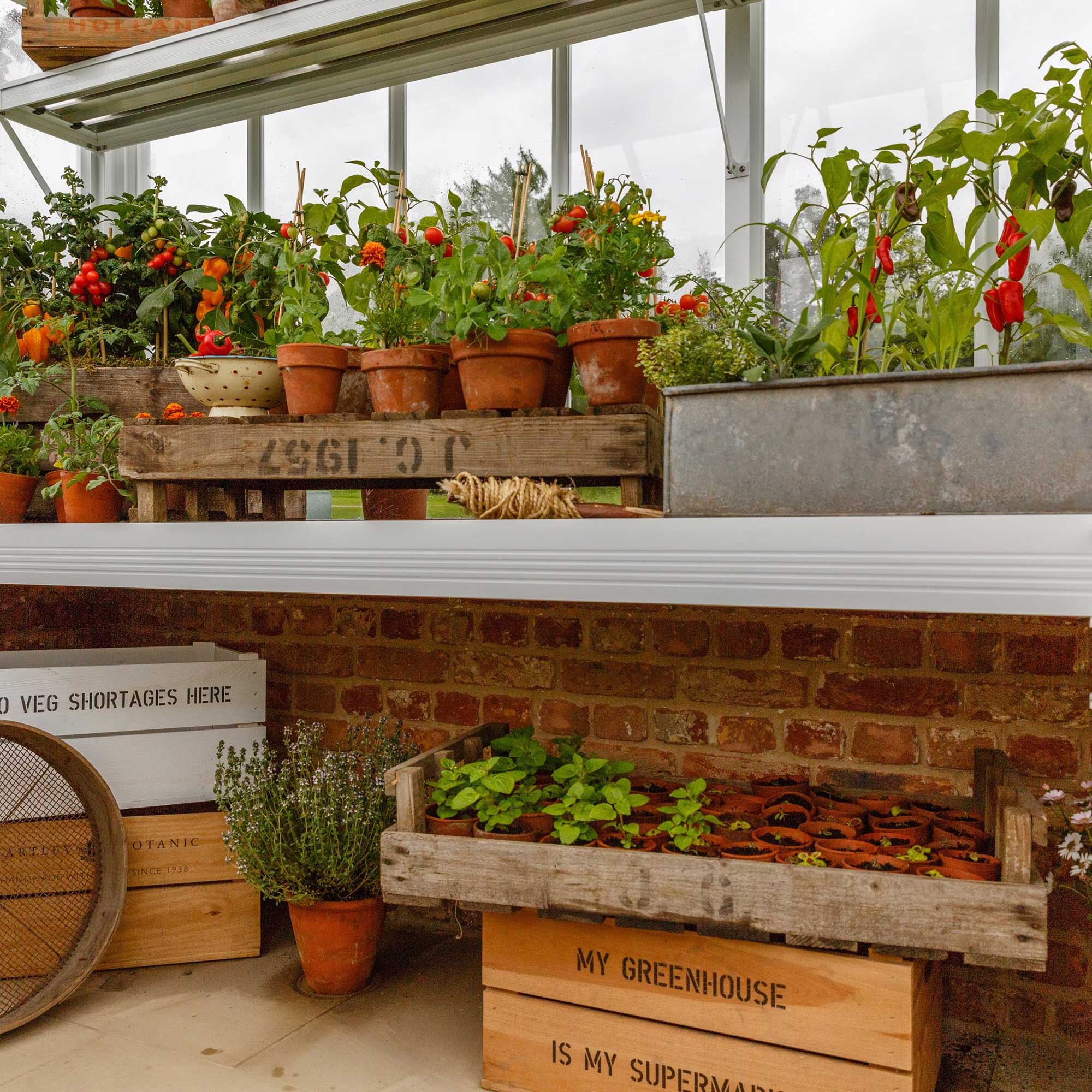
Once the peppers start to outgrow the smaller 9cm pots, you can move them into their final pot. They can grow to about 60cm tall so make sure the pot is large enough.
'Once the plants have reached 10cm high, transfer them into 20-25cm (5-7 litre) pots, depending on the variety, filled with fertile, well-drained compost, and grow under glass in a sunny, sheltered spot,' says Craig Wilson.
Don’t be afraid to put the pepper plants in a bigger pot if you wish.
'Plastic pots with draining holes are an affordable option and will be perfect to accommodate pepper plants. Avoid terracotta pots because they tend to dry out quickly in warm conditions and peppers prefer moist soil,' says Matt Jordan.
7. Harden off plants
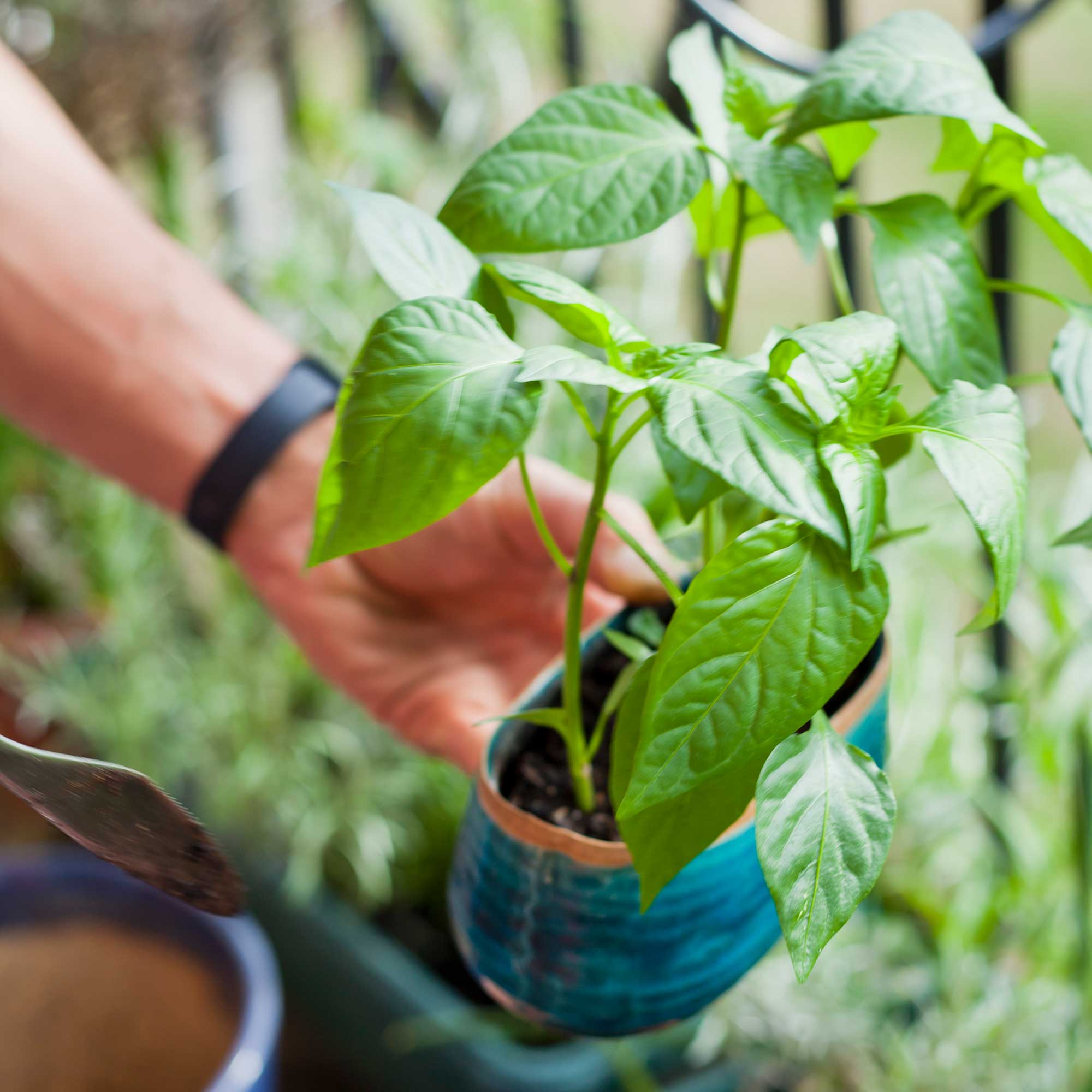
When growing peppers in pots there is the option to move them outdoors when the weather warms up, but you first need to 'harden off' the plants – acclimatise them to the change in temperature and conditions.
'Plants should not be moved outside into a non-heated greenhouse or cold frame before the mid to end of April. Peppers have no frost tolerance and will not survive in a non-heated greenhouse or a cold frame if there were a cold snap,' says Andrew Mellowes.
Make sure you acclimatise the pepper plants appropriately before moving them to a cooler environment. Andrew offers these general rules:
- When moving pepper plants from a heated greenhouse or window ledge into a cold greenhouse or cold frame – slightly open the lid (cold frame) or window (greenhouse) during the day, and close it at night for the first week.
- Over the next two weeks, gradually raise the lid of your cold frame or keep the window/door of your greenhouse open more consistently. Then you could consider moving your plants outside.
- When moving your peppers totally outdoors, it is essential they are placed in a very sheltered, warm, and sunny spot – against a south-facing wall would be ideal. Peppers are not cold hardy and prefer warmer climates for being grown totally outdoors. Think carefully about where you will place your pots. If you do not have these kind of conditions at home, consider keeping your peppers inside, or in a ventilated greenhouse for the entirety of the summer.
8. Fertilise plants
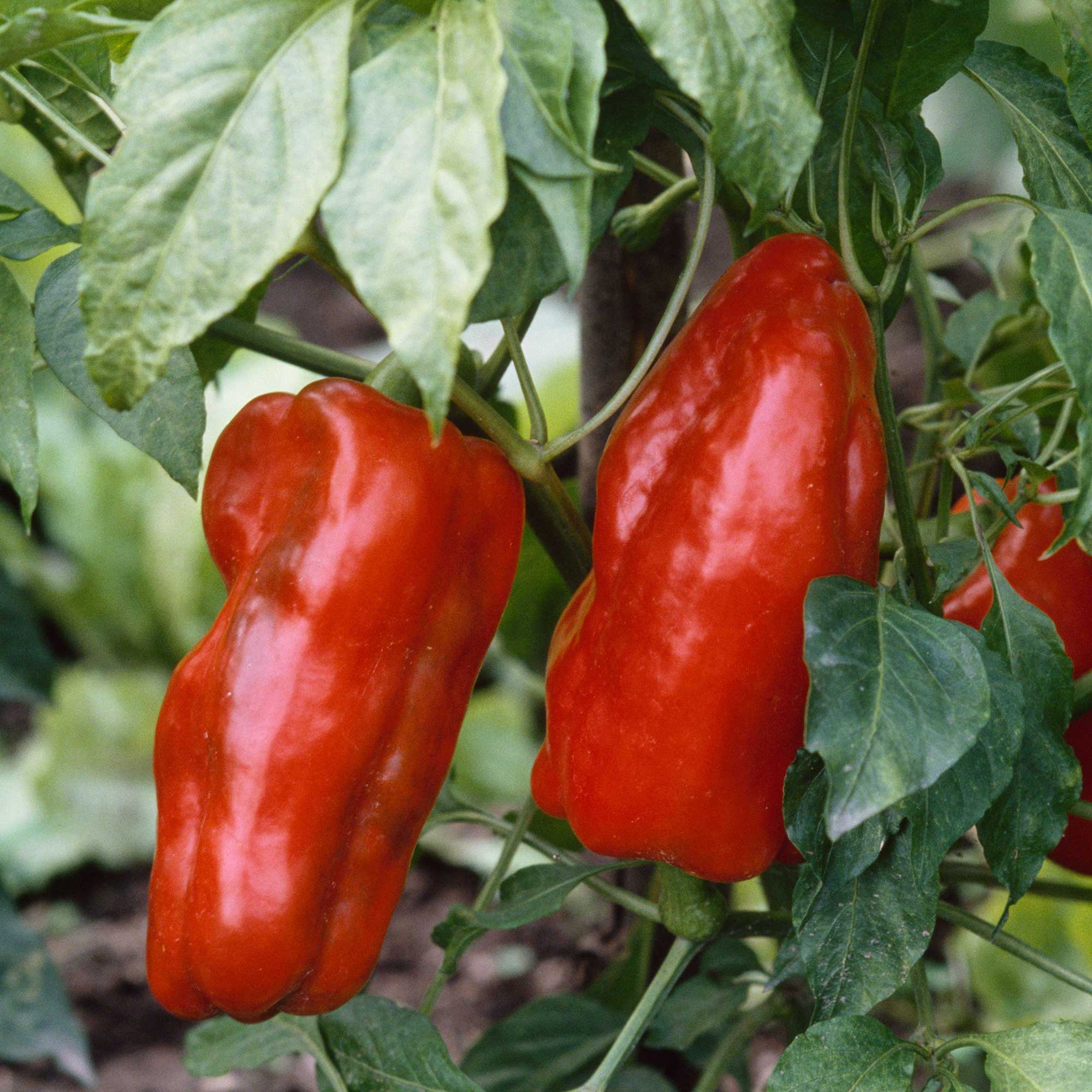
Peppers need plenty of potassium and nitrogen to keep them healthy.
'When the plants start flowering, feed them with natural, organic plant food designed for fruits and vegetables,' advises Chris Bonnett, founder of Gardening Express.
Fertilise the plants about every two weeks, but watch out for fertiliser burn, which occurs when plants have too much fertiliser. This can look like brown patches at the tips of the leaves, or a dry, shrivelled-up leaf.

Chris is the founder and of CEO of Gardening Express, an leading online UK based plant and garden specialist.
9. Stake plants
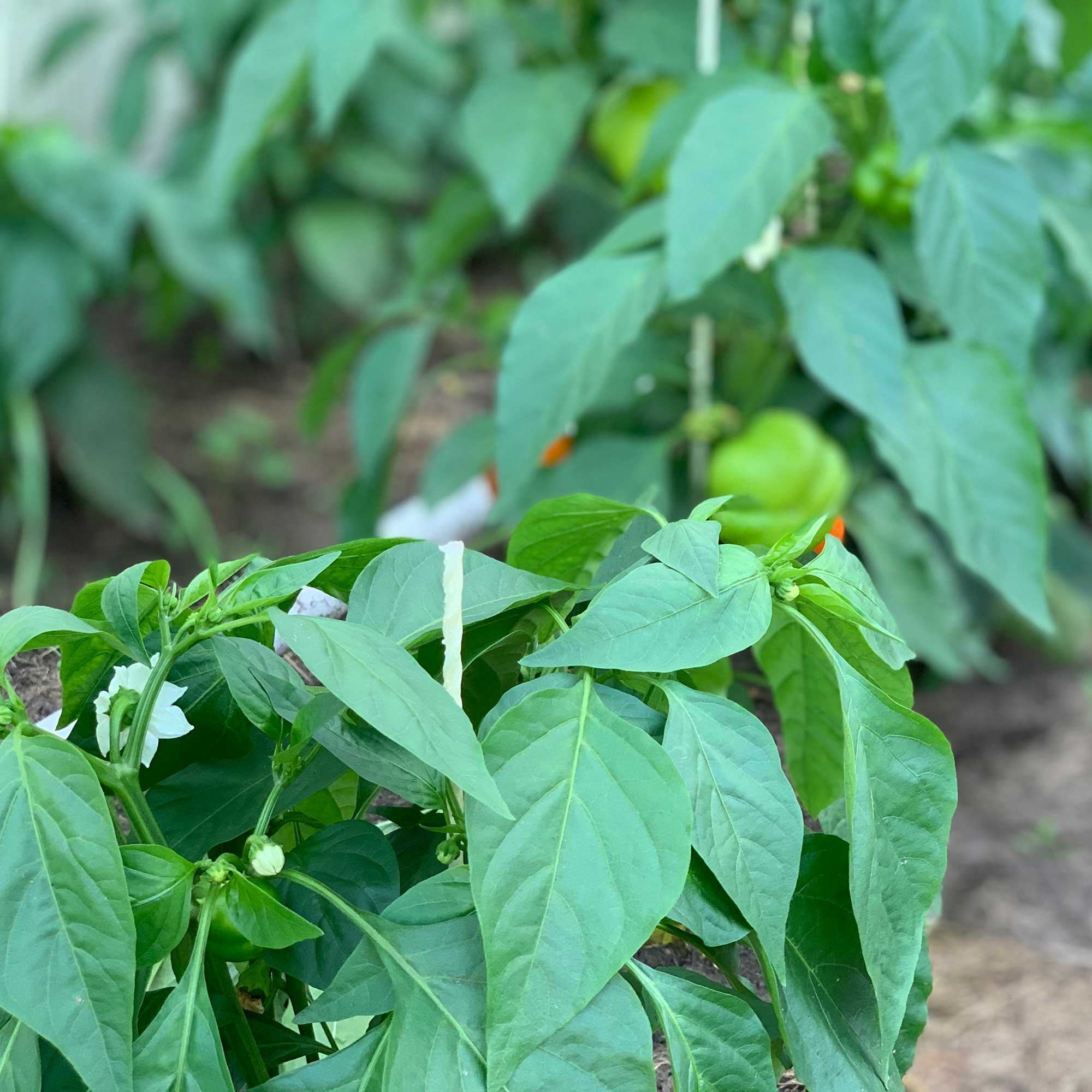
'As your peppers begin to grow, they may become too heavy for the plant to support. For smaller plants, a wooden skewer is ideal to prevent them from leaning. Avoid a stake that is too large though, as this may damage young roots,' says Matt Jordan.
'Place the stake between 5 and 7cm into the soil in one smooth motion and loosely tie string or zip ties to keep the plant supported. As the plant outgrows the skewer, replace it with a larger support to prevent peppers from drooping on the soil.'
10. Pinch out
'Pinch out the growing tips from the main stems of the pepper plants when they are about 20cm (8in) tall, to encourage business,' advises Tom Barry at Hartley Botanic.
11. Harvest the fruits
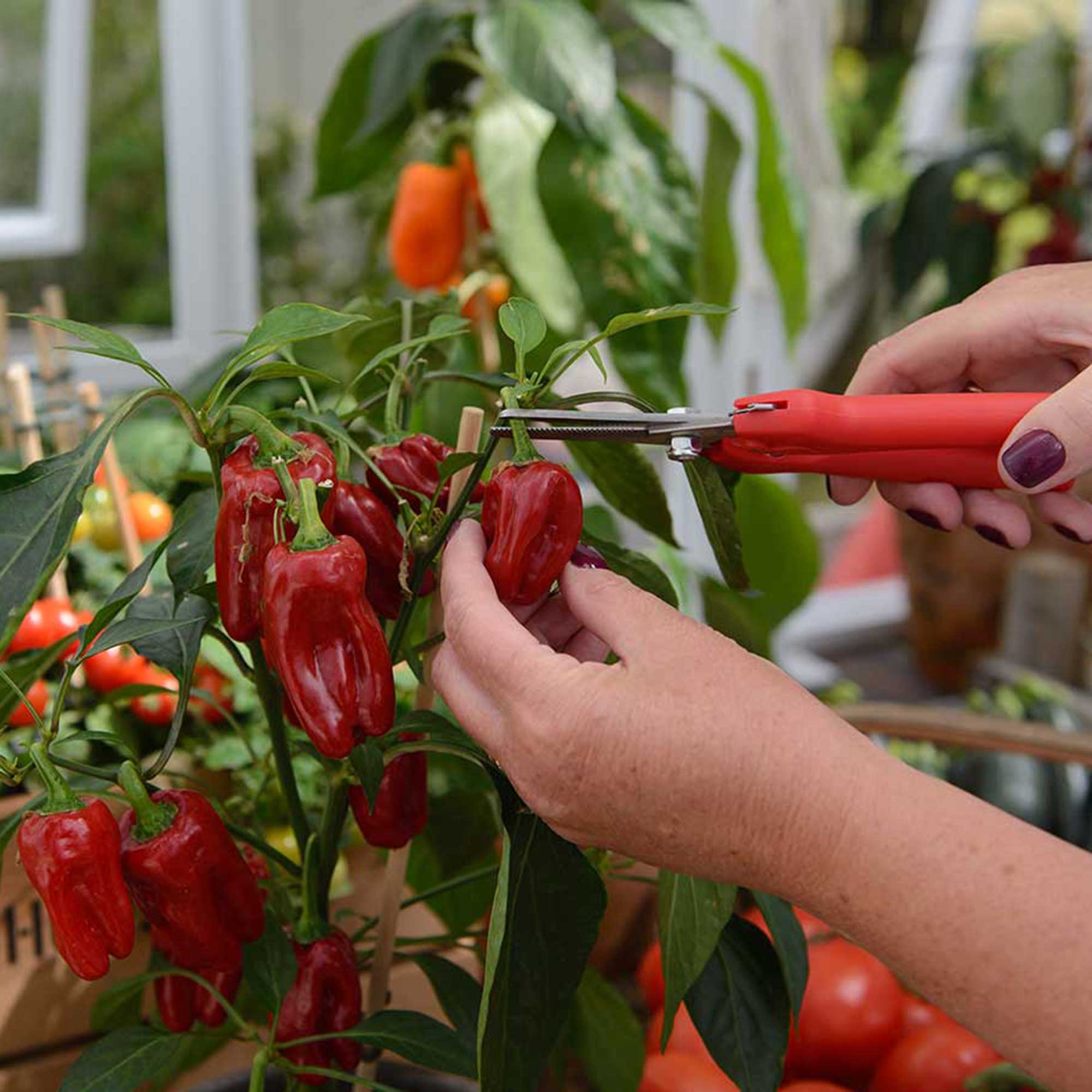
'Harvest peppers when they reach a mature size and the right colour. You can also pick them early when they are still green and wait for them to ripen,' says Chris Bonnett.
Some of the varieties he recommends for growing in pots are Corno di Toro Rosso, Redskin, Bulgarian Carrot peppers and Shishito peppers.
Andrew Mellowes advises harvesting peppers when 'the fruit is swollen and glossy. This would normally be from mid-Summer and into Autumn for plants grown indoors, and from August into September for plants growing outdoors.'
Growing peppers FAQs
How long do peppers take to grow in pots?
Peppers take a few months to grow and the fruits to develop before they are ready to harvest. The length of time they take will depend on whether they are grown indoors or outdoors, and also how hot the weather has been and how much sunlight they have received each day.
When growing peppers in pots from seed, it can take 4 to 5 months before you can harvest the first fruits. Plants that are grown indoors or under glass will produce a harvest earlier than those grown outside.
How many pepper plants can I put in a container?
You should only put one pepper plant per container as they need plenty of space to grow, and can grow up to 60cm tall. Some varieties are also bushy. If you overcrowd the pepper plants then they will not have the space to establish strong roots for healthy growth.
Get the Ideal Home Newsletter
Sign up to our newsletter for style and decor inspiration, house makeovers, project advice and more.

Rachel Crow is the editor of Period Living Magazine and a senior content editor, contributing homes and garden content for idealhome.co.uk. She has written for lifestyle magazines for many years, with a particular focus on historic houses, interiors, arts and crafts, and gardening. Rachel started her journalism career on BBC radio, before moving into lifestyle magazines as a freelance writer and editor. She worked on The English Home and The English Garden magazines before joining the Period Living team as features editor and then deputy editor. She was garden editor for Homes & Gardens magazine and homesandgardens.com and contributed articles to Country Homes & Interiors.
-
 Will a conservatory add value to your home and how can you maximise it?
Will a conservatory add value to your home and how can you maximise it?This is what the pros say
By Amy Reeves
-
 I’ve been looking for a new signature scent for my home and The White Company's new fragrance is the exact summer holiday smell I needed
I’ve been looking for a new signature scent for my home and The White Company's new fragrance is the exact summer holiday smell I neededSantorini smells fresh, summery and sophisticated
By Kezia Reynolds
-
 How to remove algae from garden walls in five steps – and the cleaning product experts rave about for tackling it fast
How to remove algae from garden walls in five steps – and the cleaning product experts rave about for tackling it fastExperts share their top tips for getting garden walls algae-free
By Katie Sims
-
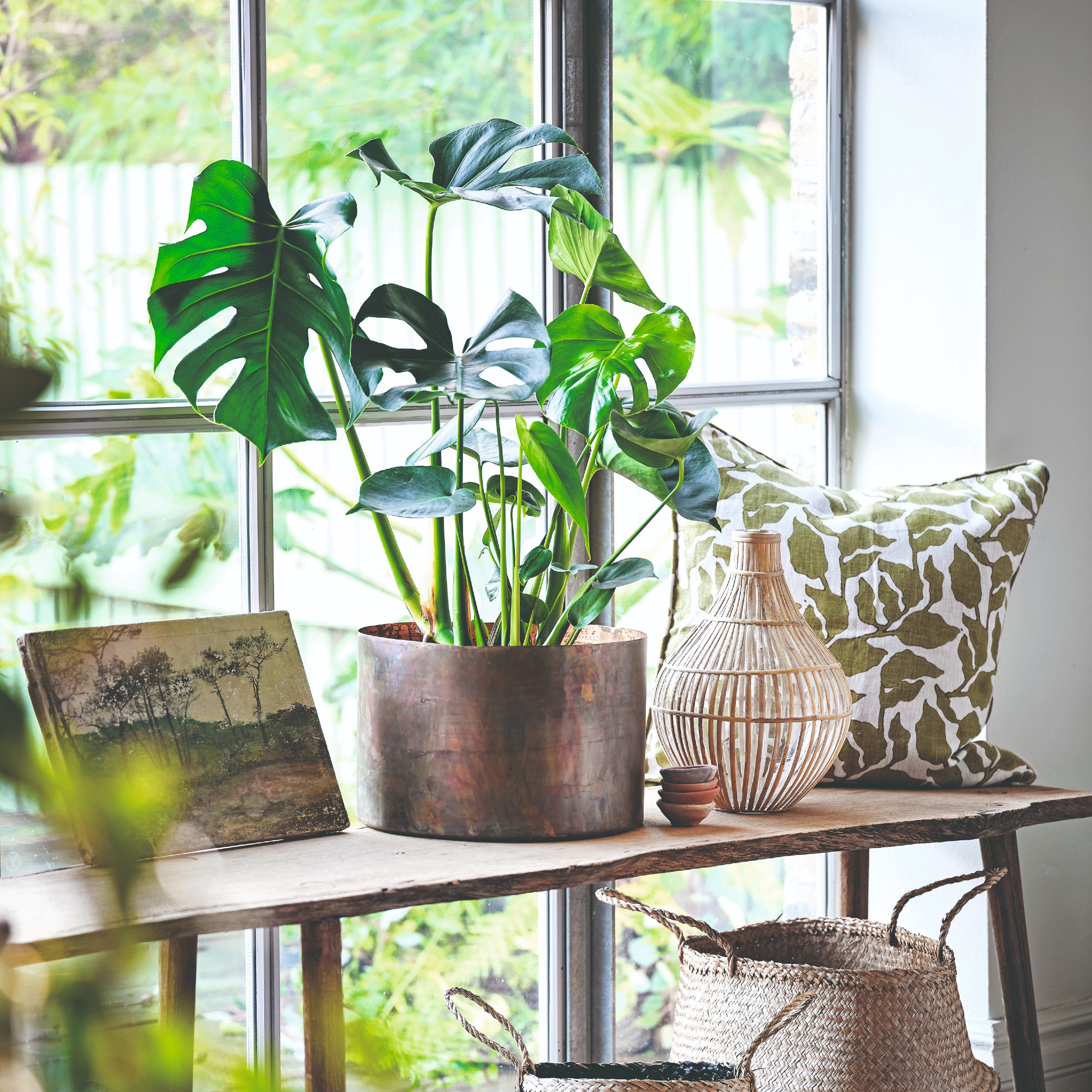 Best soil for Monstera – this is the perfect mix for healthy Swiss cheese plants
Best soil for Monstera – this is the perfect mix for healthy Swiss cheese plantsAll the ingredients you should look out for
By Sophie King
-
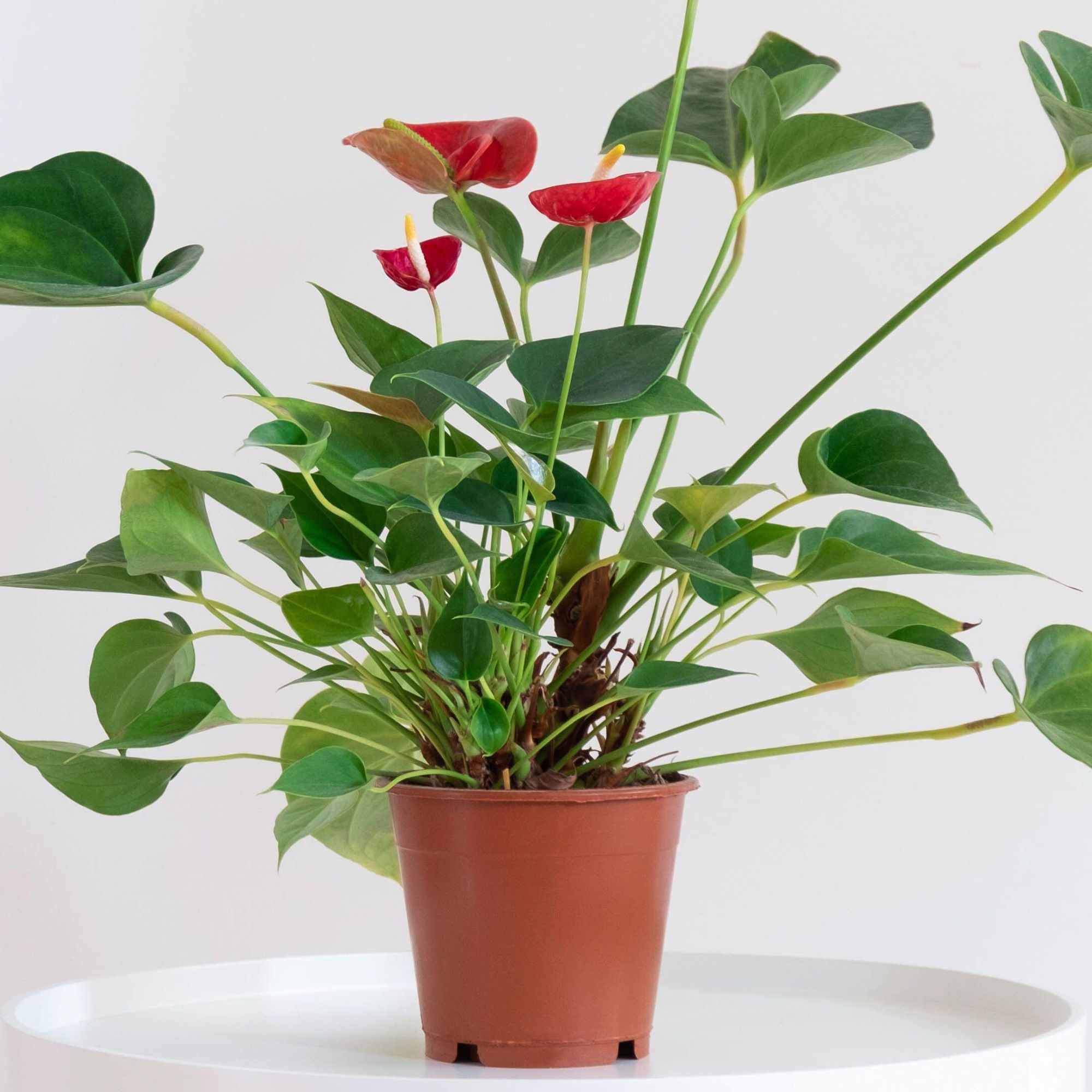 How to propagate anthurium – the three best ways to double these pretty tropical plants
How to propagate anthurium – the three best ways to double these pretty tropical plantsWhether you propagate anthurium through cuttings or separation, you'll love these ways to increase your collection
By Holly Reaney
-
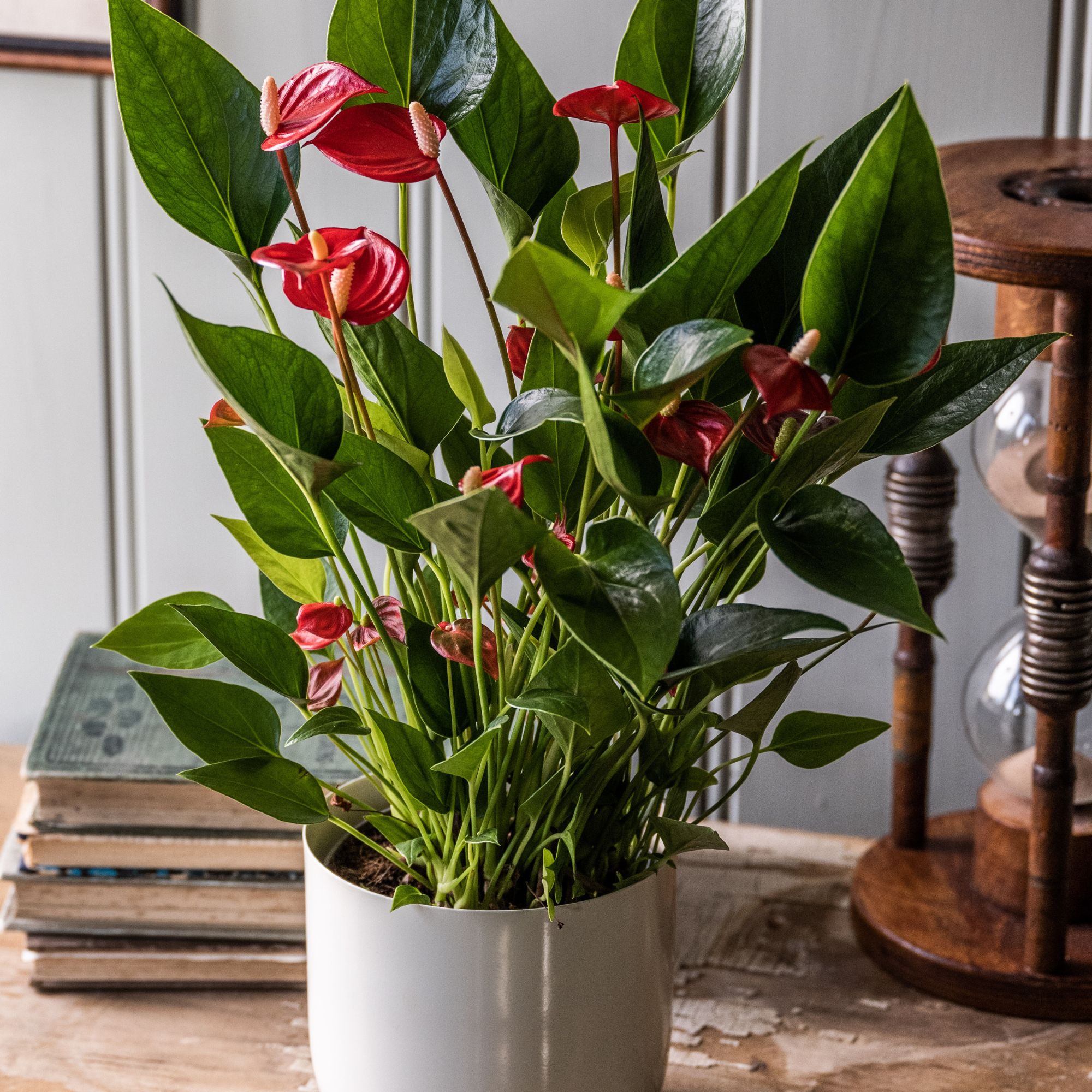 How to care for Anthurium for long-lasting vibrant and tropical colour
How to care for Anthurium for long-lasting vibrant and tropical colourWith their vibrant colours and tropical look, Anthurium andraeanum or Flamingo flowers make for an eye-catching addition to a kitchen, bathroom or conservatory
By Holly Reaney
-
 How to care for spider plants to get the most from this resilient beauty
How to care for spider plants to get the most from this resilient beautyThe retro houseplant is making a comeback – here's how it can thrive
By Holly Reaney
-
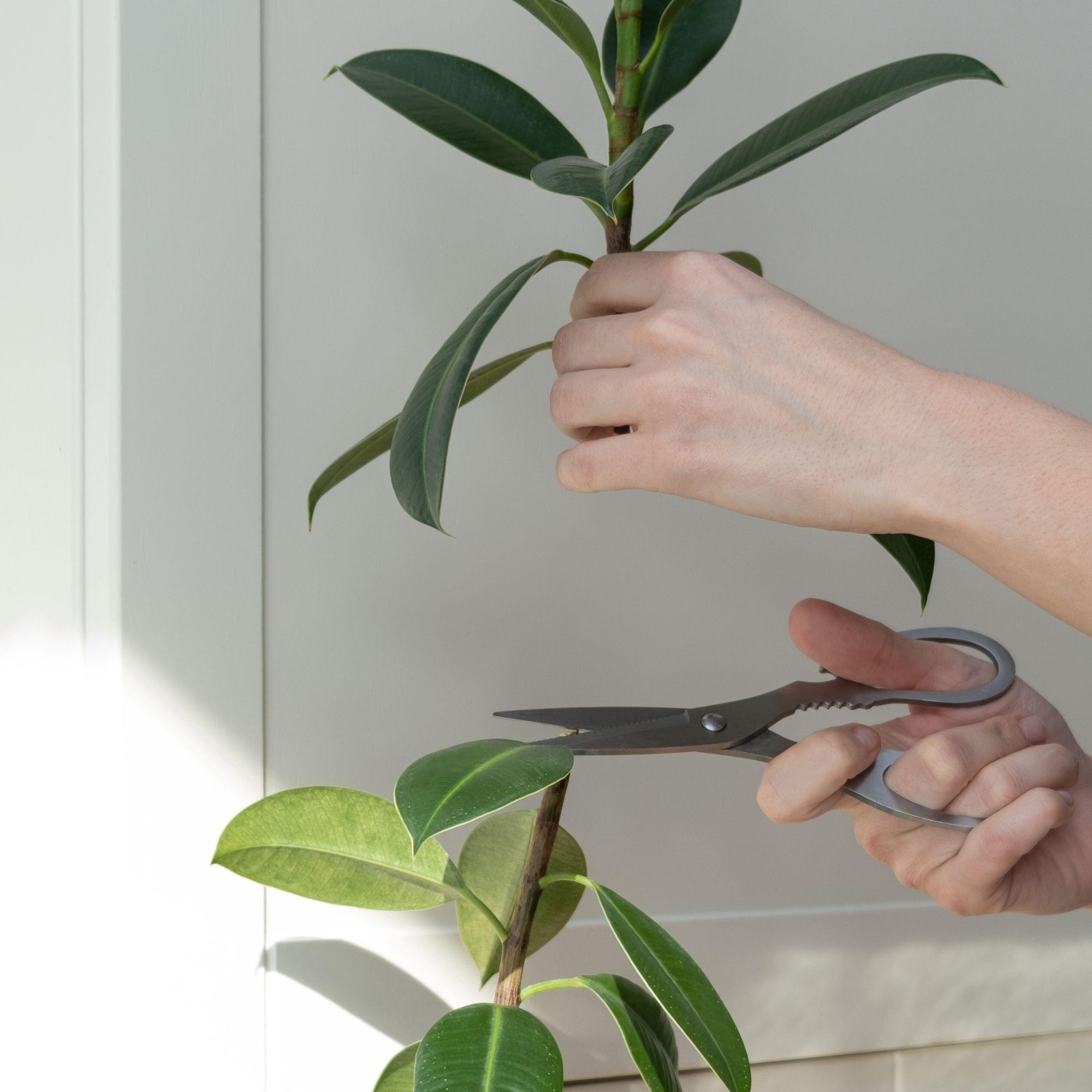 How to propagate a rubber plant - expand your houseplant collection for free
How to propagate a rubber plant - expand your houseplant collection for freeWhy have just one rubber plant when you can have loads?
By Holly Reaney
-
 How to care for a rubber plant – the almost unkillable houseplant
How to care for a rubber plant – the almost unkillable houseplantLow maintenance and fast-growing, the rubber plant is the perfect choice for beginners and ideal for making a statement in a home
By Holly Reaney
-
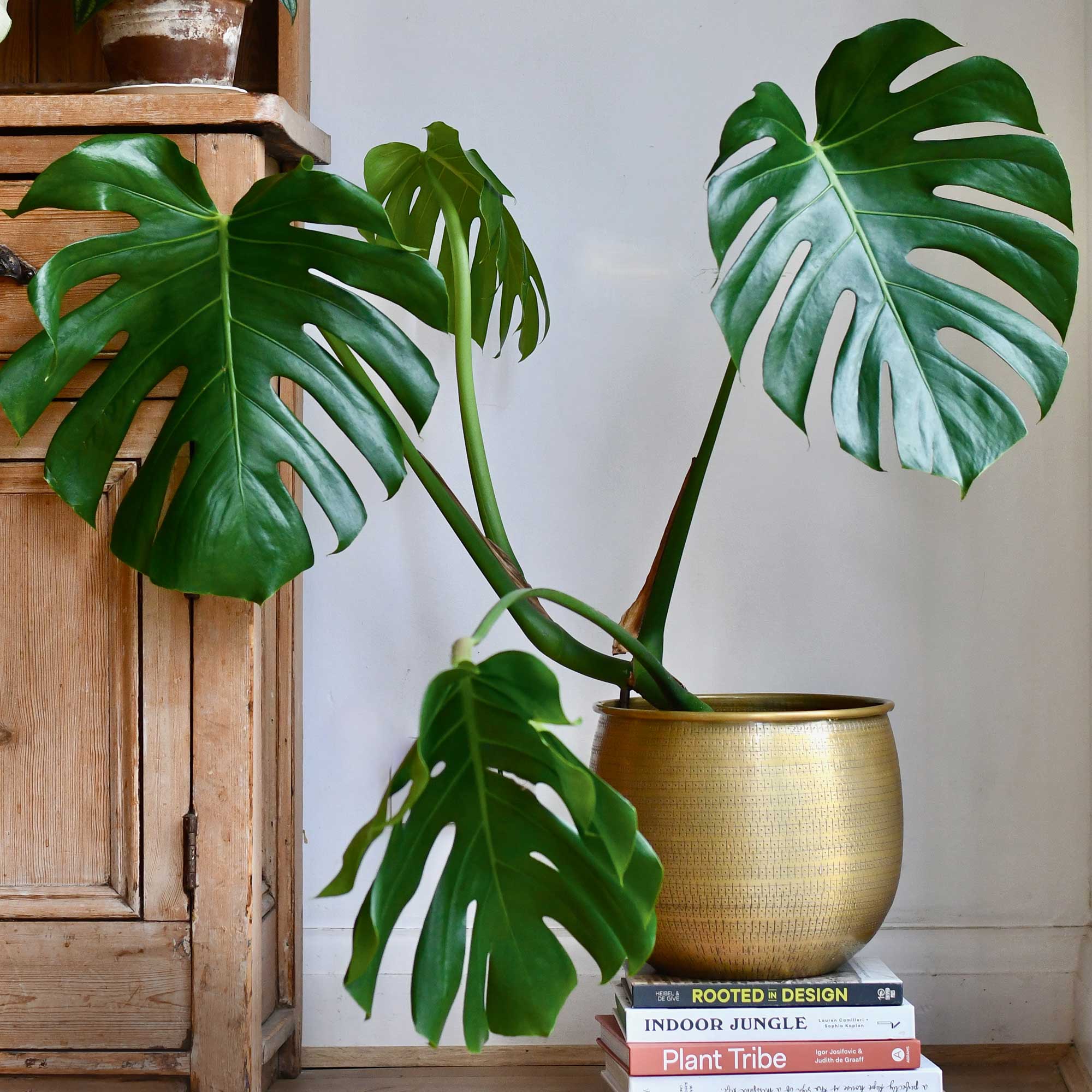 How to care for a monstera deliciosa – the gentle giant of the houseplant world
How to care for a monstera deliciosa – the gentle giant of the houseplant worldHow to care for a monstera deliciosa, including where to position, when to water and how to propagate
By Holly Reaney
-
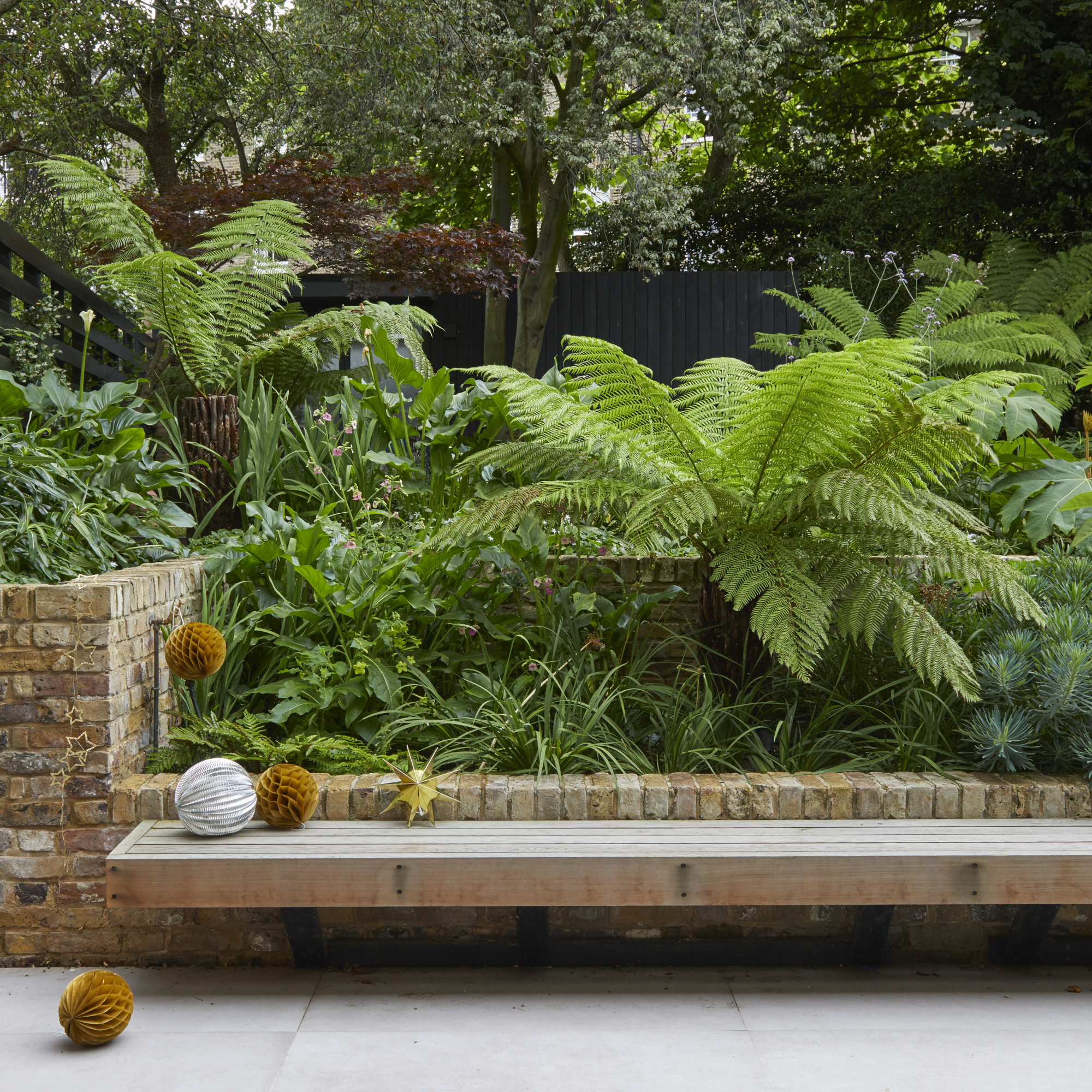 When to cut back ferns to keep them looking their best
When to cut back ferns to keep them looking their bestLearn when to cut back ferns to keep these hardy garden stalwarts in tip-top condition
By Rachel Crow